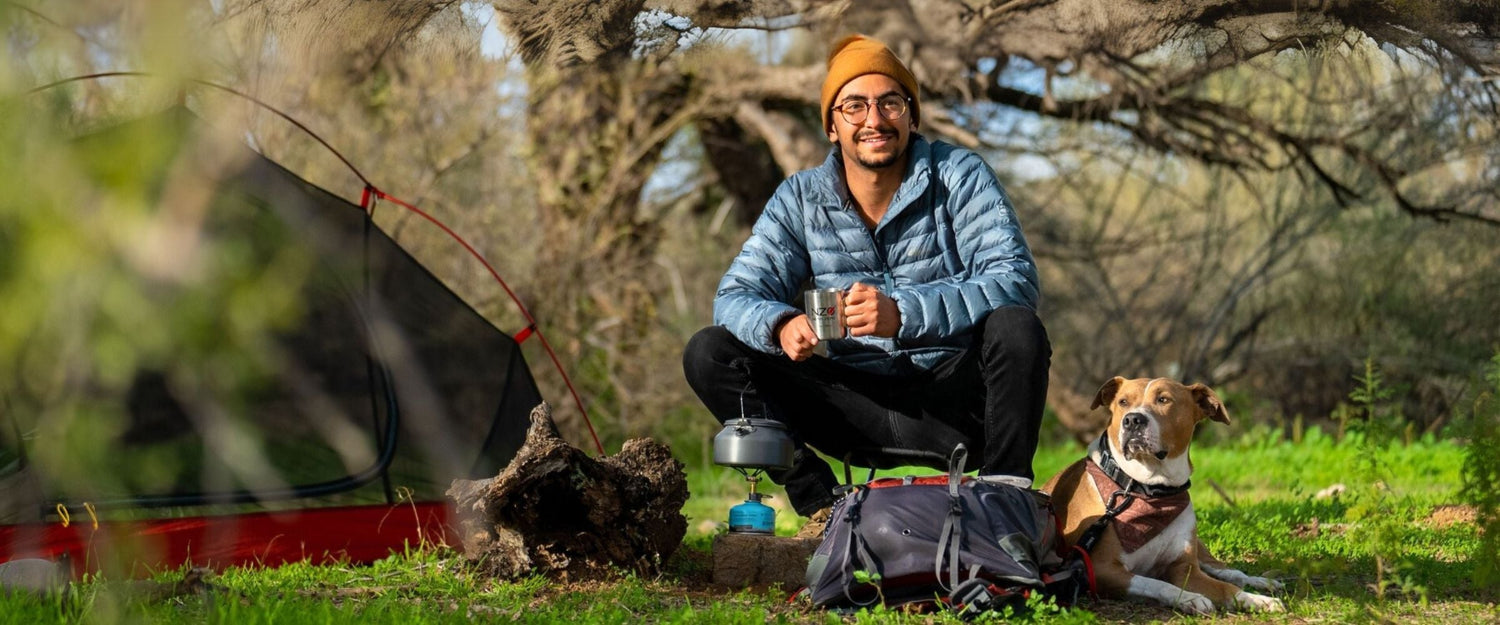
Tent vs. Hammock vs. Bivy Sack—What’s Right for Your Outdoor Adventure Nap Time?
If you’re new to camping or backpacking, one of the first big questions is: Where do I actually sleep? At Near Zero, we have three amazing tents, 1 person tent, 2 person tent, and a 3 person tent all great for backpacking and camping. But there are some that prefer hammocks, or maybe a bivy sack. But how do you know which ones you want to add to your backpacking checklist and which is best for you?
Here’s a breakdown of the most common sleep systems in the backcountry—so you can rest easy, no matter how far from home you are.
Tent: The Classic Choice
Best for: Most beginners, group trips, all-weather reliability!
Tents are the most common choice for a reason—they’re versatile, weatherproof, and easy to share with a friend.
✅ Pros:
-
Full protection from wind, rain, bugs, and cold
-
Room to store gear inside
-
Available in lightweight, backpacker-friendly designs (like the Near Zero 2-Person Tent with 360° mesh body panel for ventilation and stargazing)
-
Can be used almost anywhere you find flat ground
❌ Cons:
-
Heavier and bulkier than other sleep systems (Except Near Zero’s, ours are easy to set up, and weigh just over 3lbs).
-
Requires time and space to set up
-
Needs a decent patch of flat, clear ground
Pro Tip: If you’re just starting out, a tent is usually the most forgiving and comfortable option.
Hammock: The Chill Choice
Best for: Mild weather, wooded environments, solo trips
Hammock camping has grown in popularity for good reason—it’s lightweight, fun, and lets you sway under the stars.
✅ Pros:
-
Super lightweight and compact, great for your set of ultralight backpacking gear
-
No need to find flat ground—just trees!
-
Great airflow and comfort (especially for side/back sleepers)
-
Easy to set up and take down
❌ Cons:
-
Requires trees spaced the right distance apart
-
Offers little insulation on cold nights without added gear
-
Can be tricky in bad weather unless paired with a rainfly and underquilt
-
Not great for couples or groups
Pro Tip: Hammocks are great for quick weekend trips or warm climates. Just make sure you know how to stay warm and dry.
Bivy Sack: The Ultra-Minimal Option
Best for: Solo hikers, ultralight backpackers, stealth camping
A bivy sack is like a waterproof shell that goes around your sleeping bag—think of it as the sleeping bag’s raincoat.
✅ Pros:
-
Extremely lightweight and compact
-
Quick to set up—just lay it down and climb in
-
Great for minimalist or stealth camping
-
Good emergency backup shelter
❌ Cons:
-
Very limited space—no room to move around
-
Can feel claustrophobic
-
Less protection from rain unless paired with a tarp
-
Not ideal for long trips or bad weather
Pro Tip: Bivy sacks are great for solo hikers who want to travel fast and light—but they’re not the most comfortable long-term shelter.
So… Which One Should You Choose?
|
Sleep System |
Best For |
Weight |
Comfort |
Weather Protection |
Cost |
|
Tent |
Beginners, groups, 3-season use |
Moderate |
High |
High |
Moderate to high |
|
Hammock |
Solo campers, warm weather |
Light |
High (with setup) |
Medium |
Moderate |
|
Bivy Sack |
Ultralight backpackers |
Very light |
Low |
Low to medium |
Low |
Your ideal sleep setup depends on how you like to travel, where you’re going, and how much comfort you want. If you’re new to camping, a lightweight tent offers the best balance of protection, space, and simplicity.
But no matter what you choose, the most important thing is that you get out there. The stars are waiting—and so is a great night’s sleep.

